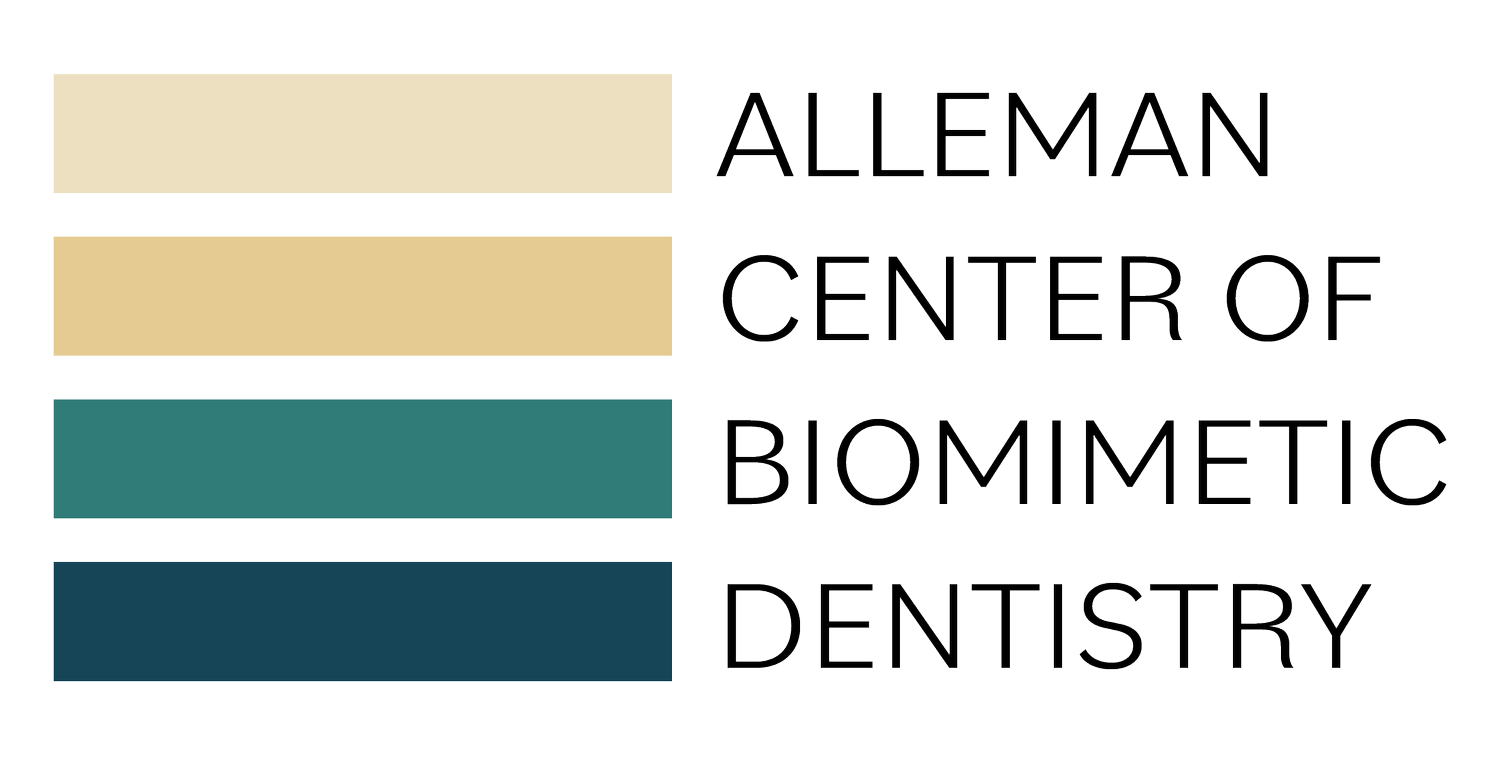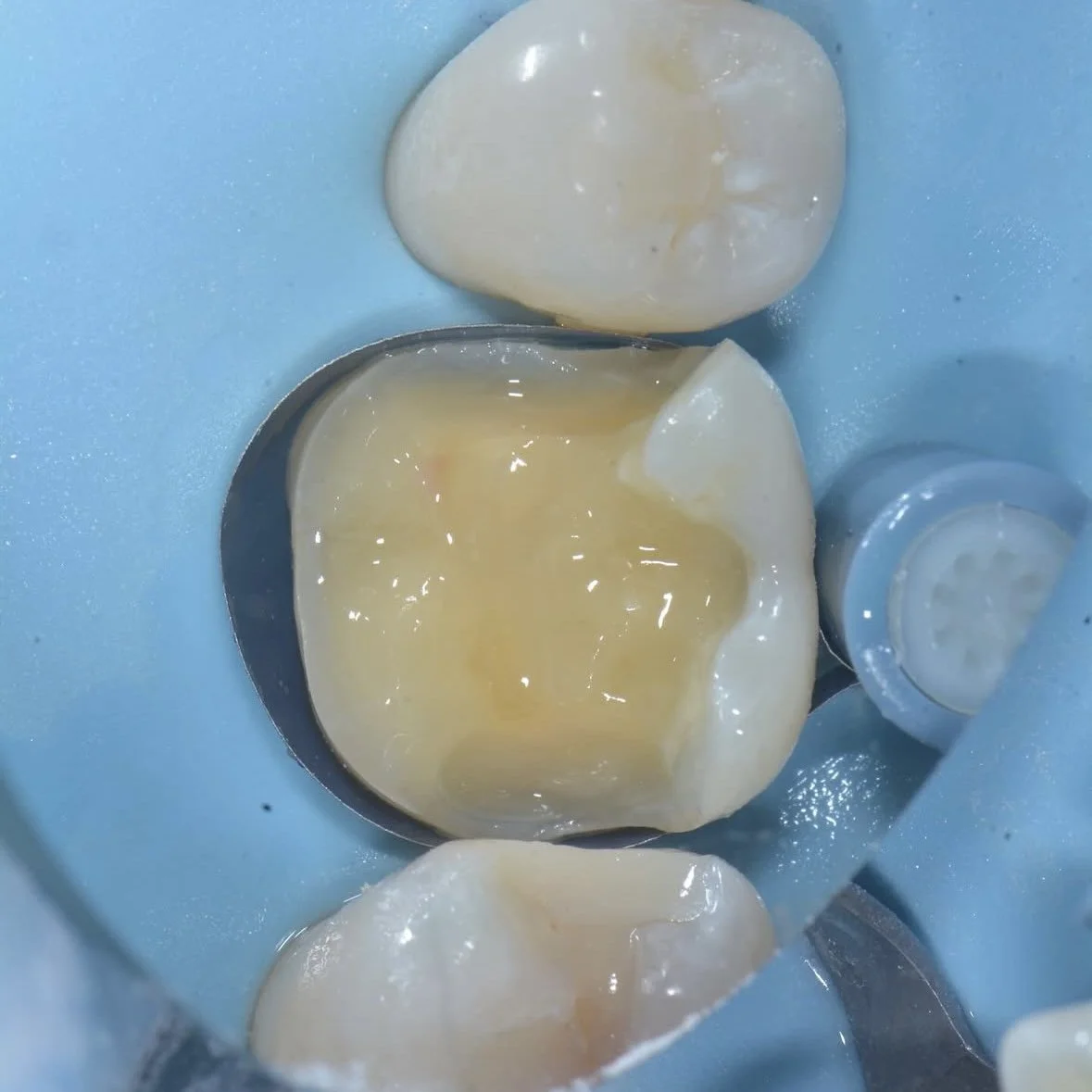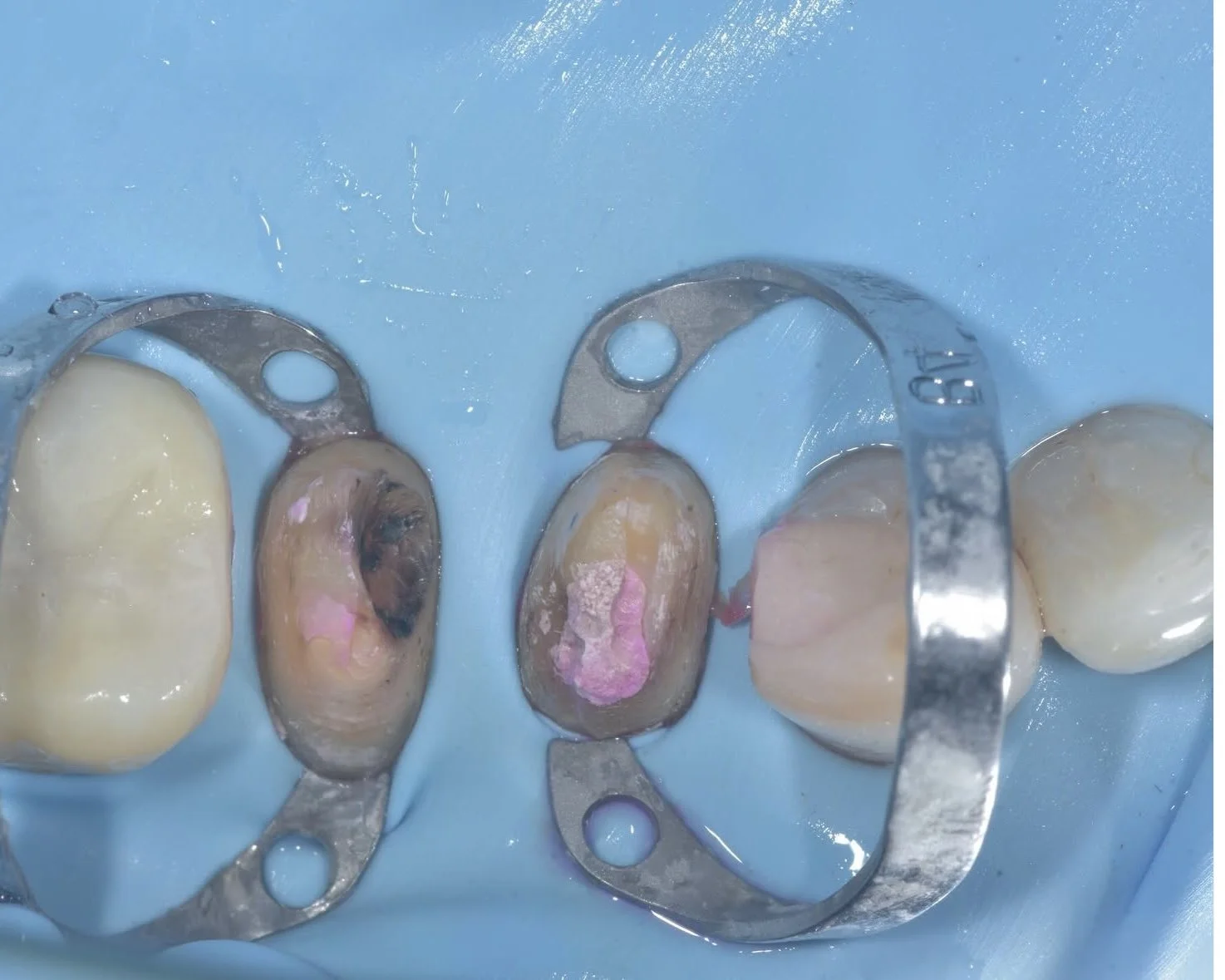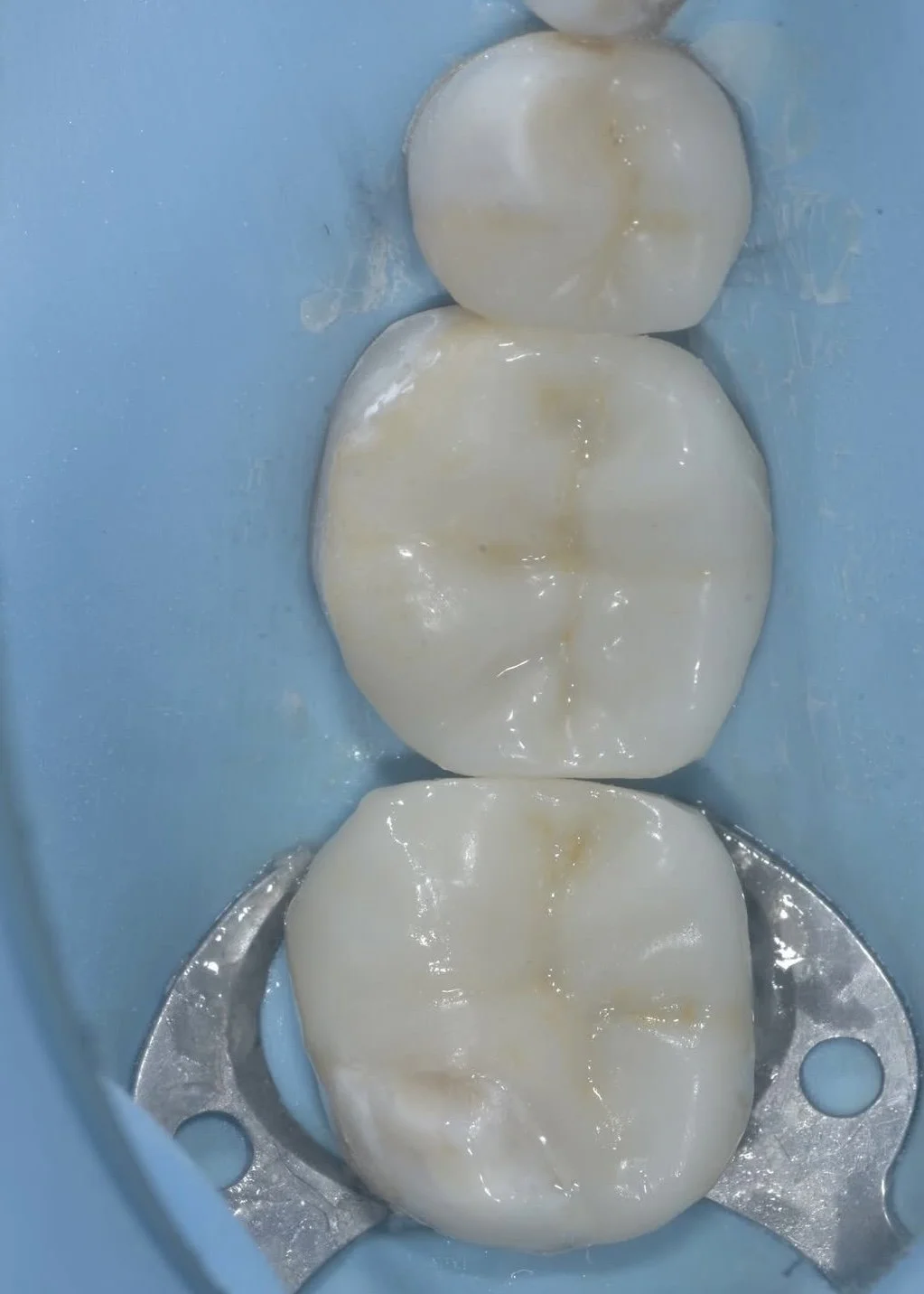Biorim: Critical Tooth Structure for Restorative Dentistry
The biorim is the bottom 2 mm of dentin in a tooth. Defined by Dr. David Alleman in 2003, this portion of the tooth has been studied by Magne 2004 (Magne P, Belser U. Rationalization of Shape and Related Stress Distribution in Posterior Teeth A finite Element Study Using Nonlinear contact Analysis. J Periodontics Restorative Dent 2002;22-425-433) and others. Advancements in dentinal bonding systems and adhesive protocols now allow for dental restorations that conserve the biorim, supporting the tooth’s long-term health.
These photos of a traditional crown replacement and a biobase with a conserved biorim showing the difference in tooth structure between the preparations. Cases by Dr. Davey Alleman, DMD.
Critical tooth structure: why some tooth structure is more important than others
The goal of biomimetic dentistry is to mimic the natural tooth in dental restorations. While restorations will ideally conserve as much tooth structure as possible, some areas of the tooth are defined as critical in allowing the tooth to function like a natural tooth.
Natural teeth transfer the forces of occlusion through the sub-occlusal transverse ridges and the bottom 2 mm of dentin in the tooth. While the enamel webs prevent the tooth from over-extending and cracking, the biorim absorbs the forces around the pulp chamber. Both of these structures are critical to a tooth’s natural function and should be preserved when possible.
When treating large failing restorations, full coverage crows are no longer necessary. The advanced adhesive protocols of biomimetic dentistry allow critical tooth structure in the biorim to be conserved. Case by Dr. Davey Alleman, DMD.
How the biorim supports long-term tooth health
When the biorim is destroyed or compromised, like in a ferrule preparation for a full coverage crown, forces of occlusion transfer to unsupported areas of the tooth, putting the tooth at greater risk of fracture. By preserving the bottom 2 mm of dentin in a tooth, even a restored tooth can function for decades like a natural tooth.
Traditional crown preparations increase a tooth’s risk of fracture. Retreatment case by Dr. Davey Alleman, DMD.
Tips for practitioners: how to conserve biorim tooth structure
Conserving the biorim has many benefits and requires adhesive dentistry. Retention form preparations, on the other hand, often require removing some or all of the biobrim to hold the restoration. Dr. David Alleman, DDS created his Six Lessons Approach to Biomimetic Restorative Dentistry to outline protocols that create bonds to dentin that last for decades. By learning to predictably bond to dentin, practitioners can conserve more tooth structure with preparations that are driven by pathologies rather than standard retention preparations.
This case by Dr. Davey Alleman, DMD shows how the Six Lessons Approach protocols eliminate the need for full coverage crowns with predictable dentin bonding protocols.
Learn how to say goodbye to retention form with predictable bonds to dentin in upcoming Alleman Center training programs.
Learn more about conservative dental treatments in this Six Lessons Approach Podcast episode.























